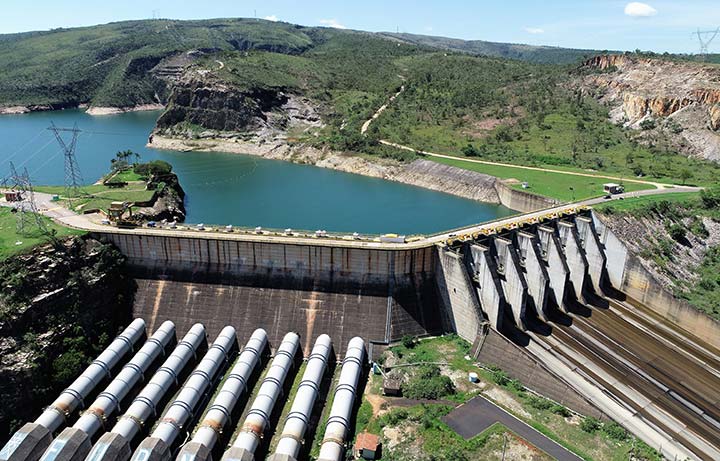South American Power: Challenges Building a Resilient, Flexible System

December 13, 2019—The global energy landscape is rapidly changing, and countries around the world are wondering how they can best adjust. South American countries are no exception. Many have traditionally relied on large renewable hydropower but now face increasingly variable hydrological conditions and also see rapidly growing variable renewable energy (VRE) markets.
Wind and solar are more affordable than ever before. An abundance of affordable unconventional natural gas has also emerged, expanding market opportunities for natural gas by pipeline and via liquified shipments. Battery storage, electric vehicle charging, and other distributed energy resources are also changing the way power systems are designed, planned, and operated.
Argentina, Brazil, Chile, and Colombia all want more resilient, flexible, and sustainable power systems, but how do they transition?
In a new technical report, Options for Resilient and Flexible Power Systems in South American Economies, researchers from the Joint Institute for Strategic Energy Analysis (JISEA) analyzed the unique challenges these countries face in switching to sustainable power systems. Hint: Natural gas and renewables play a big role.
Argentina
Argentina could potentially become an energy leader in South America.
The country has growing wind and solar industries and has big plans to expand the Vaca Muerta formation—the second-largest shale gas and fourth-largest shale oil reserves in the world.
Researchers determined the Vaca Muerta formation could —under ideal conditions—not only supply Argentina's energy needs, but also be exported to other countries either via pipeline or shipped as liquified natural gas. However, only about 5% of Vaca Muerta's play has been developed so far.
Expanding the Vaca Muerta formation is an ambitious undertaking given the country's economic struggles, according to the study. Argentina's shrinking economy, high inflation, and a depreciating peso could prevent the construction of necessary energy infrastructure. In the meantime, Argentina can work to encourage investment in the play and continue to deploy variable renewables.
Brazil
Hydropower has been the cornerstone of the renewable electricity mix in Brazil until recently, but the power sector is now rapidly diversifying.
Before 2010, hydropower plants typically provided 80% of Brazil's annual electricity needs. But hydropower output has faced challenges during recent extreme weather events.
The El Niño occurrences in 2014-2015 caused extreme drought conditions. These drastic swings in rainfall put stress on the power system and required thermal power generation to keep the grid stable. During these drought years, hydropower plants accounted for only 64% of Brazil's generation mix.
This shift in hydropower generation highlighted Brazil's need to diversify its power mix.
In recent years, Brazil has developed sophisticated energy planning capabilities and installed more non-hydro renewables than any other South American country. It's currently working to develop its offshore natural gas resources and introduce electricity pricing reforms.
Researchers determined the country would benefit from building large-scale underground natural gas storage, connecting transmission lines with neighboring countries, and integrating more distributed energy resources.
Chile
Chile is no stranger to energy crises.
Starting in 2004, Chile lost most of its natural gas supply due to an abrupt drop in Argentinian pipeline imports. And unlike the other countries studied in this report, it has insufficient domestic gas reserves that can be developed over the longer-term.
Petroleum, liquified natural gas, and coal generation were all expanded to make up for the loss of natural gas supply. This shift in energy generation has shaped the country ever since. Now, Chile is working to transition away from coal.
Since 2014, Chile has successfully expanded its high-quality wind and solar resources. The next step is planning how to make this power consistently available for high-demand areas like Santiago and mining sites that require night-time energy when solar isn't available.
The study found that Chile will likely rely on imported natural gas more heavily than most other countries moving forward, including natural gas from the Argentinian pipelines that are now operating again.
Researchers identified at least three options for strengthening the flexibility of Chile's power system: connecting electricity lines with neighboring countries, improving demand response, and deploying energy storage.
Colombia
Colombia relies heavily on hydropower, despite efforts to diversify its electricity mix. Although Colombia is a major exporter of coal, it only supplies 10% of the country's electricity. At the same time, its natural gas production has quickly declined while demand continues to grow.
Researchers found that while Colombia recently discovered offshore gas reserves, it is unlikely to produce significantly more gas for at least a decade when the necessary drilling and infrastructure are expected to mature.
These factors put Colombia in a unique situation compared to the rest of the countries studied—it is the only country that does not yet have a vibrant market for variable renewable energy. However, the country held its first successful auction for wind and solar in late 2019 and is targeting rapid growth in VRE over the coming years.
Looking Ahead
There are challenges ahead for Argentina, Brazil, Chile, and Colombia, but the researchers emphasize that there are several policy options in both electricity and natural gas sectors that could contribute to greater power system flexibility and resiliency in each country.
Because market conditions are changing so quickly, required institutional adjustments can't always respond rapidly enough. However, the research also noted that lightning-fast innovation could lead to unexpected breakthroughs that may resolve some of the challenges these South American countries face.
With careful consideration, flexible, resilient power systems can be possible for Argentina, Brazil, Chile, and Colombia.
For more information, see the full report and the summary highlights.
Back to JISEA News >
